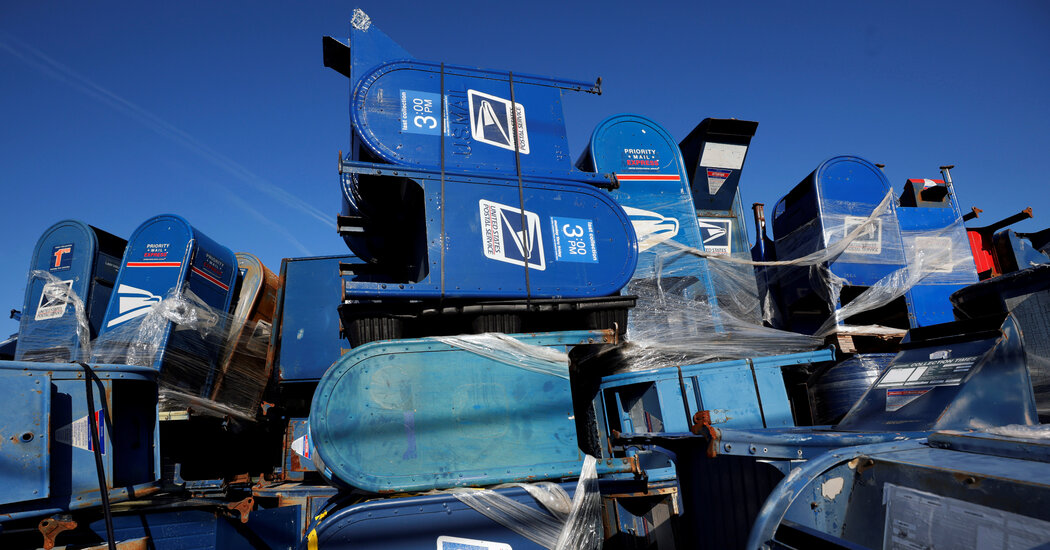Dear readers,
Last time I helmed this column, a few kind readers had questions — which I’ve now had time to consider properly. Credit them for this week’s recommendations.
“Suggestion for my mood, please: a beach book (by which I mean, takes place on a beach) subversive enough to get me over my in-laws but not cynical enough to be over my kids. —From reader CG
I am counting on our beloved readers to chip in here, but I do have a few ideas for threading the multigenerational vacation needle. What you’re saying is that you want something skeptical of humanity but essentially menschy, conspiratorial but not jaundiced. That takes place on a beach.
It goes without saying that there are entire careers composed of sandy family sagas, but if you’re looking for something off the beaten shoreline, what about John Banville’s elegiac “The Sea?” Or Jess Walter’s stylist, glossy, sad period piece “Beautiful Ruins?” I won’t pretend Virginia Woolf’s “To The Lighthouse” will foster family harmony, but it’s never time wasted. (I am also trying to give you a range of beach landscapes.)
I will take any excuse to talk about one of my favorite novels, Iris Murdoch’s “The Sea, the Sea” — a Booker-winning philosophical fever dream that is by turns weird, lurid, slow, confounding, clumsy and beautiful — but although it’s one of her more accessible novels, I fully admit it’s not for everyone. Keep reading for one that is.
—Sadie
“Falling Star” (Henry Tibbett, No. 5), by Patricia Moyes
Fiction, 1964
For rather more conventional vacation (or rainy-day) reading, may I suggest a good series? I came across my first Inspector Henry Tibbett in a rental property some 10 years ago. I had finished my worthy biography of a scientific luminary; I was desperate. I raided the house’s spare bookshelf — mostly sailing manuals and a couple of children’s books, which I quickly dispatched — and found myself confronted with the unprepossessing cover of “Falling Star.” I started reading with low expectations, and was hooked. It was a perfect period piece: a murder on the set of an early-60s’ London “angry-young-man”-style kitchen sink drama, including a Pinteresque screenwriter, bohemian actors, a sleazy producer and a series of postwar apartments. It was taut and suspenseful and I had no idea whodunnit.
About a year later, I ran across my second Tibbett on the giveaway shelf at the laundromat. This time, I knew to pounce. The premise was equally fab: a ski chalet in the Swiss Alps involving some extremely groovy intellectuals, a Bardot-like starlet and a possible ring of Parisian call girls.
I resolved that I would only read Tibbetts that fell into my lap by chance. But another year went by, I didn’t go anywhere and I started to jones. I ordered five more online. There was a country house murder. There was a mysterious spinster. There were tropical resorts, a mod atelier, a dognapping. They’re not all great (the detective is something of a cypher, and I’d skip the dated fashion-house one, despite all the Carnaby-Street gear) but they are all stylish and reassuring as only a mystery can be, and the fact that there are so many left in the world is a great comfort. And “Angel Death,” No. 15, even involves a Caribbean beach.
Read if you like: “Dalgliesh,” “Look Back in Anger,” slightly soggy sandwiches
Available from: A library sale or a rented house! (Also all available digitally.)
This monograph on the architect Judith Chafee comes in response to a very good question from @50s Quiet Quitter: “Please recommend a book (or medication or incantation) that gives someone enough fortitude to do a book purge. It is hard!”
The first thing to be said is that getting rid of books is a complicated and personal process; what’s freeing to one person is painful to another. If I’m totally honest, it took a recent move to force me to reckon with my books, and it was indeed very, very hard.
Going through 15 years’ of clothes made me feel slightly ill, glutted with consumerism and old versions of myself. Looking through the expired goods in my pantry was depressing and mysterious — why so many ancient cans of black cherries in syrup?
Books were different; I wanted to keep far more than I’d expected. I compromised with a transition shelf (OK, cardboard box) in which I placed books that I plan to revisit before making a final determination. It is now in the closet.
But that doesn’t answer your question, does it? Once upon a time, we could have mentioned Marie Kondo and moved on. But she seems to have apostatized, so perhaps “The Gentle Art of Swedish Death Cleaning” is a more timely manual (my mother found it very inspiring, “in theory,” as she says). I am often moved by reading about spare, ascetic spaces: Jun’ichiro Tanizaki’s “In Praise of Shadows” is an eloquent argument for spareness in all things (interiors just one of them); the work of certain architects is another.
I ordered the Chafee book after seeing the 1975 Ramada House in Tucson. Chafee did her most famous work in the Southwest, and is known for working in the regional vernacular. (Ramada House, for instance, utilizes traditional Indigenous shade structures and materials to combat the desert heat.) “Powerhouse” is beautiful, of course, and a good introduction to a modernist whom I, for one, didn’t know enough about. And if you’re looking for deacquisitioning inspo, the breadth and serenity of Chafee’s work is a very good place to start. That said, it will require your adding another book to the shelf.
Read if you like: “The Quick and the Dead” by Joy Williams; “Georgia O’Keeffe (A Studio Book)”; the sun-bleached detective fiction of Tony Hillerman
Available from: A good art bookstore
Why don’t you …
-
Get out of the kitchen and try making soup? “Cooking with Betty Friedan…Yes, Betty Friedan!” is a 1977 essay from this newspaper’s pages in which the “Feminine Mystique” author talks about reconciling with the pleasures of (voluntary) cooking.
-
Dominate that boardroom? “For the businesswoman of the ’80s, there may well be a move toward a working uniform. The suit, for the corporate world, is the quickest signal of executive status.” So writes Janet Wallach in 1980’s “Working Wardrobe: Affordable Clothes That Work for You!” Interspersed with personal stories of “real women” (Nancy Reagan is one; the founder of Echo scarves is another) are guides to capsule wardrobes in various palettes (presumably you’ve already “had your colors done”to determine your season) including evening and travel variations. This is my TikTok; I can’t put it down.
-
Get the lead out? Speaking of didactic titles, may I introduce you to “Pencils You Should Know: A History of the Ultimate Writing Utensil in 75 Anecdotes.” Not only is this a beautiful collection of pencils famous and obscure (I suppose aficionados don’t say “implement?”) but it is also a social history in 12 inches. If you’ve read this far, I presume you’ve seen one of those incredible videos about their manufacture!


